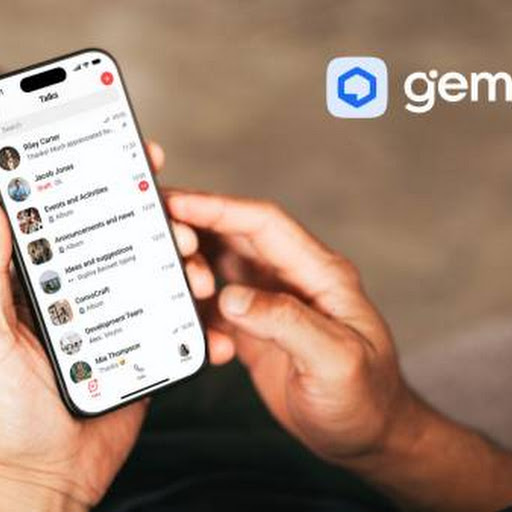In an era where the “digital office” stretches across countries, regulatory zones, and bandwidth realities, workplace chat has evolved from a nice‑to‑have into the backbone of organisational memory. Calendar invites come and go, but chat threads and file links become the living record of how decisions were made. Gem Team positions itself at the centre of that record, arguing that a corporate messenger must be as easy to adopt as consumer apps yet as defensible as a compliance vault.
This deep dive unpacks the platform’s architecture, feature depth, and user feedback, while drawing comparisons with incumbents that dominate the global collaboration market. The goal is simple: help you decide whether Gem Team deserves a place on your IT roadmap.
Definition & Origin
Gem Team is a secure enterprise messenger combined with a lightweight collaboration hub. While many chat services bolt encryption on top of a consumer‑grade stack, Gem Team’s founding mandate was to make compliance and control native—then work backward to design an interface that normal employees could love. The vendor behind the platform has been building B2B software for over half a decade, servicing banks, infrastructure operators and mid‑market tech firms. That enterprise heritage is visible everywhere: from mutual TLS handshakes at layer 7 to optional on‑prem deployments that satisfy even the strictest national data laws.
Business‑First DNA
Behind every button sits a policy switch. The development team admits they are not trying to reinvent the social chat wheel—they are packaging a feature set businesses already expect (threads, reactions, voice, video) but wiring it into a control plane that auditors can approve without lengthy workarounds. The result is a product that feels familiar to end‑users but produces the kind of audit trails, retention schedules and role mapping that compliance departments usually beg vendors to add after purchase.
Cloud or On‑Prem by Checkbox
There is no separate “enterprise edition” or pricey professional‑services engagement required to self‑host. Gem Team ships a deployment utility capable of spinning up a cluster on a private cloud, bare‑metal servers or a national operator’s infrastructure. For companies happy with SaaS, the vendor maintains EU‑based, US‑based and APAC clusters, each segregated by jurisdiction to satisfy data localisation regimes.
Ten Core Capabilities of Gem Team
Gem Team’s product map is intentionally compact. Instead of a long treadmill of half‑finished features, engineers chose ten pillars and iterated until each felt production‑ready.
-
Threaded Messaging at Speed – Messages arrive in under 250 ms on average, even on 4G links. Threads keep side discussions tidy so main channels remain readable.
-
300‑Seat Video Conferencing – Built on WebRTC with server‑switching that adapts to regional load. Screen share and session recording are included at no extra cost.
-
Secure File Transfer – Uploads are chunked, encrypted, and resumable. Retention periods can align with your corporate data policy in a few clicks.
-
Granular Role Permissions – Every action—posting, editing, inviting, exporting—maps to a permission that admins can assign to LDAP or IdP groups.
-
Multi‑Factor Login Policies – Enforce SMS Hardware Key for finance, while letting interns use TOTP codes. Flexibility reduces resistance during roll‑out.
-
Self‑Contained Mobile Apps – iOS and Android clients offer offline caching, low‑bandwidth fall‑back, and instant device wipe if stolen.
-
Org‑Level Channel Taxonomy – Departments, projects, and temporary task forces each receive distinct namespaces, preventing chat sprawl.
-
Broadcast & Announcement Feeds – High‑priority updates float above the chatter, ensuring HR or leadership posts reach every employee’s inbox.
-
Audit & eDiscovery Toolkit – Export logs in ISO 27001‑friendly formats; replay chat history for legal holds without third‑party plugins.
-
API & Webhook Gateway – While the app catalogue is still growing, a REST & WebSocket gateway lets engineers integrate bots, CRM alerts or custom dashboards.
Security Blueprint
Mutual TLS Everywhere
Unlike services that rely on standard TLS only for client‑to‑server hops, Gem Team requires two‑way certificate verification on all intra‑service calls. The upside: even if an attacker compromises one microservice, lateral movement is severely constrained.
End‑to‑End Encryption in DM Mode
Direct messages can be toggled to E2EE. Keys live on user devices; servers merely relay opaque payloads. This meets or exceeds GDPR Article 32 guidelines on state‑of‑the‑art protection.
Privilege Separation & Least Trust
Administrative consoles run on separate ports, with tokens that expire after 15 minutes of inactivity. Sensitive operations—deleting a channel history, rotating retention schedules—require a second confirmation by another admin, mirroring the “four‑eyes principle” used in banking.
Transparent Security Posture
The vendor publishes quarterly penetration‑test summaries and a live status page. Clients on the self‑host track receive signed vulnerability advisories within 24 hours of discovery.











Artikel Terkait
Bangkai Orangutan Tapanuli Ditemukan Tertimbun Kayu di Tengah Operasi SAR: Kronologi & Fakta Lengkap
Forum Kiai NU Jawa Desak MLB, Usul Rhoma Irama Pimpin PBNU - Konflik Internal Terbaru
Dandhy Laksono: Bencana Sumatra Bukan Alam, Tapi Bencana Buatan Manusia - Analisis Lengkap
Ade Tya Bocorkan Isi Chat Rahasia dengan Ari Lasso, Picu Ancaman Keras dari Dearly Djoshua